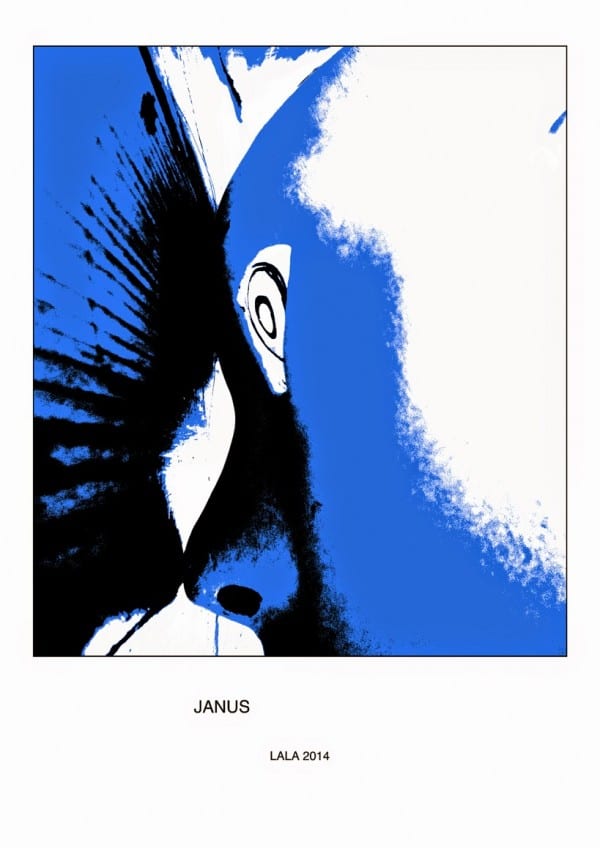First, Ken Parille is here with a new Grid column, and he's tackling a subject that I'm sure everyone is happy to keep reading about, James Sturm's "The Sponsor". But Parille being Parille, he brings something new to the table, examining the strip from 14 different perspectives, at least one of which will probably appeal to you:
Online tweets/posts/etc. about comics (or any subject, really) often seem like futile skirmishes in an unwinnable war. Each critic takes a narrow position and holds that territory, refusing to grant any validity to divergent arguments. Isn’t it possible, especially when talking about art, that different and even contradictory interpretations can be equally valid, that a short comic strip, for example, can communicate its meanings (if that’s ever the right word to use when talking about art) in opposing ways? In other words, isn't it possible that a comic can simultaneously express X and Not X, with both interpretive camps being right? I think so.
Recently, James Sturm’s online strip “The Sponsor” (read it here) has generated a lot of commentary that takes the form of “It clearly can mean only X.” Making no effort to look for evidence that complicates or undermines their claims, these writers lack "interpretive sympathy": they fail to identify with readers whose experiences lead them to very different conclusions. They also overlook a fact about reading comics: one element — a line of dialogue, a facial expression, a subtitle — can simultaneously suggest different interpretations.
Below are fourteen responses to “The Sponsor”. While writing each, I tried to imagine what it was about the comic that would lead a critic to view this reading as the “correct” one. When I first read the strip, it seemed fairly transparent in its “message” (which is never the right word to use when talking about art). But now I’m unsure that my initial response was anything like “true” or “accurate.” (Doubt can be a positive interpretive approach.) As of today, I don’t agree with all — or even most of the claims — I make below. But trying to understand each as I was writing it — to act for a moment as if it were true — was instructive. To me at least.
And then we have Sean T. Collins's review of Aisha Franz's Earthling. Here's how he opens:
Aisha Franz's faces are an architectural marvel. Their features bunch up in the center of great round white circle heads crowned with hair that looks sculpted from clay. They're bookended by apple cheeks drawn with a perpetual blush rendered as circular gray scribbles, as though a physical ordeal or an uncomfortable emotion were always only scant seconds in their past. Eyebrows, wrinkles, creases, and smile lines push the eye toward the beady eyes and pug noses they ring. (The look is very Cabbage Patch Kids, but there's a reason those weird-looking things made millions.) They broadcast emotion from the center of the head like a spotlight focused down into a laser -- curiosity and confusion, peevishness and puckishness, boredom and loneliness and anger and, very occasionally, satisfaction and delight. In a book where Franz's all-pencil style -- the lack of inks and the deliberately boxy and rudimentary props and backgrounds suggesting a casual, tossed-off approach completely belied by Franz's obvious control of this aesthetic -- works very well, those faces work best of all.
The story is another matter.
Meanwhile, elsewhere:
—Interviews & Profiles. The National Book Foundation hosts an interview of NBA nominee Roz Chast.
Smoky Man talks to the contributors to the Italian anthology U.D.W.F.G., including Mat Brinkman.
Drew Friedman answers five questions for Book Soup.
Hannah Berry, Kevin Huizenga, and James Lloyd talk about their participation in the WWI-themed anthology, Above the Dreamless Dead.
Newsday checks in with Jules Feiffer.
Tim O'Shea talks to Eric Haven.
As part of a longer interview about his writing in general, novelist Will Self talks about his start as a cartoonist.
—Reviews & Commentary. The A.V. Club reviews new titles by Jeff Smith, Mickey Zachilli, and others.
Gary Panter appreciates Richard Lindner.
Adrian Hill has published the next two parts of his examination of the William S. Burroughs/Malcolm Mc Neill collaboration, Ah Pook is Here.
—News. The Rosenbach Museum is suing Maurice Sendak's estate for allegedly refusing to turn over rare books as dictated in Sendak's will. Among other books, the dispute involves several Beatrix Potter titles, which the estate apparently considers to be "children's books" rather than "rare books."
Heidi MacDonald has a photo report from last weekend's CAB.
Amazon has released its list of the best comics of 2014.
—Funnies. A few people sent me this collaboration between Zack Soto and Connor Willumsen.






